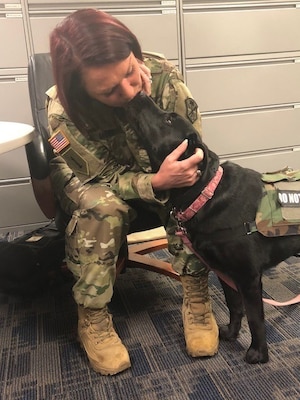By Shannon Collins DoD News, Defense Media Activity
WASHINGTON, Nov. 1, 2017 — Growing up in Gardena,
California, now-Marine Corps Cpl. Leighton Anderson recalled that as a boy his
Navy father would take him to military airshows.
At that time, Anderson said he wanted to be a fighter pilot.
“I [later] realized I can’t do that because of my eyesight.
But my dad took me over to [Marine Corps Air Station] Miramar, and I saw all of
the aviation things and the people flying. I always wanted to be a part of the
Blue Angels with their jets,” Anderson said.
Anderson didn’t get assigned with the Blue Angels
maintenance and support team, but he did get become a crew chief with MV-22
tilt-rotor Osprey aircraft at Okinawa, Japan.
As an Osprey crew chief, Anderson said he inspected the
aircraft, repaired the engines and replaced worn parts.
“While we’re flying, we back up the pilots. We load cargo
and passengers as well,” he said.
Injury
In December 2016, after serving four years on Osprey
aircraft, Anderson was severely injured in an Osprey crash during a training
mission.
“We crashed at 200 mph, and I was strapped down,” he said.
Anderson said he received a concussion, and injured his jaw
and one of his eyes. He said he was required to wear an eye patch over the
injured eye, which required stitches.
Anderson said he also broke his right hand and right foot.
“I broke some ribs and collapsed my left lung,” Anderson
continued. “I bruised my heart and fractured my right scapula.”
Anderson said he also has traumatic brain injury and
post-traumatic stress disorder.
Surfing Clinic
Today, Anderson is a patient at Naval Medical Center San Diego,
where he’s learned how to surf as part of his recovery.
Anderson said he looked at the other recreation programs the
Naval Medical Center San Diego’s Health and Wellness Department’s Wounded, Ill
and Injured Wellness division offers, but the surfing clinic stood out to him
the most.
“I’ve always wanted to learn how to surf since I’m from
California,” he said. “I tried it three times in my life and never did it. And
I was like, ‘Let me try it through the program here.’ And then after that, I
was hooked. It was pretty sweet.”
Anderson said the surfing clinic has helped him physically
and mentally.
“I had so many barriers because once I was injured I was
like, ‘I don’t know if I can do that. I might hurt myself,’” he said. “I have a
little bit of PTSD, and I didn’t think I would enjoy anything.”
Anderson added, “Once I tried it, I broke down a lot of
barriers I had mentally and physically. I had weak tendons in my hand and my
foot, but with surfing they’re starting to get better. And mentally, it makes
me happy. I love it. Everybody’s really supportive. It’s just something
everybody should take on.”









